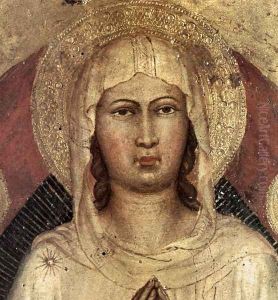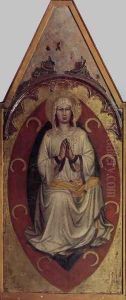Martino Di Bartolommeo Paintings
Martino di Bartolommeo, also known as Martino di Bartolomeo or Martino di Bartolomeo di Biagio, was an Italian painter and manuscript illuminator active during the late Gothic period. Born around 1370, likely in Siena, Italy, he was a prominent figure in the Sienese School of painting, which was characterized by its devotion to intricate detail, vivid colors, and religious themes. Martino’s career spanned a period of significant political and social change in Italy, influenced heavily by the Great Schism of the Western Church (1378-1417) and the gradual decline of Siena’s independence as a city-state.
Martino di Bartolommeo’s artistic output is noted for its devout religious sensibility and adherence to the Gothic style, at a time when the Renaissance was beginning to take root in other parts of Italy. His works include altarpieces, frescoes, and illuminated manuscripts, showcasing his versatility across different mediums. Noteworthy among his creations are the frescoes in the Chapel of St. Galgano at the Palazzo Pubblico in Siena and the illuminated manuscripts for the Sienese government and local religious institutions. These works are celebrated for their detailed narrative quality and luminous color palette, which were hallmarks of the Sienese tradition.
Despite the overshadowing presence of the Renaissance in neighboring Florence, Martino’s works retained a strong Gothic influence throughout his career. His figures are often elongated and ethereal, set against gold backgrounds or detailed landscapes, a style that remained popular in Siena well into the 15th century. Martino was also a teacher, and his workshop contributed significantly to the maintenance of the Sienese style.
The exact date of Martino di Bartolommeo’s death is uncertain, but it is believed he died around 1435. His legacy is preserved in the collections of major museums and in the churches and public buildings of Siena, where his contributions to the Sienese School continue to be celebrated. Martino’s dedication to the Gothic style, at a time of changing artistic norms, underscores his role as a bridge between the medieval and Renaissance periods in Italian art.

